The 100 percent disk usage issue is a common problem that many Windows users face. This frustrating problem causes your computer to slow down dramatically, making it difficult to use. Although the issue was prevalent in Windows 10, users upgrading to Windows 11 may still experience this problem. In this article, we’ll discuss various methods to resolve high disk usage on Windows 11//10 and help your computer run smoothly again.
Solved: Windows 10/11 100% Disk Usage in Task Manager
When you see 100% disk usage in Task Manager on Windows 10, it means that your computer’s hard drive or solid-state drive is operating at its maximum capacity, causing slow performance and delays in tasks.
If Task Manager shows 100% disk usage on Windows 10, don’t worry, there are effective solutions available that can solve Windows 10 100% disk usage in Task Manager issue and improve your system’s overall performance.
1. Restart Your Computer
Before diving into more complex solutions, try the simplest fix: restarting your computer. Often, a quick reboot can resolve many issues, including high disk usage on Windows 10. If the problem persists after restarting, move on to the next solution.
2. Update Your Operating System
Keeping your operating system up-to-date is crucial for maintaining optimal performance and security. Windows 11/10 updates may include bug fixes that can resolve the 100 percent disk usage issue. To check for updates:
- Click the Start button and select Settings.
- Navigate to Windows Update and click Check for updates.
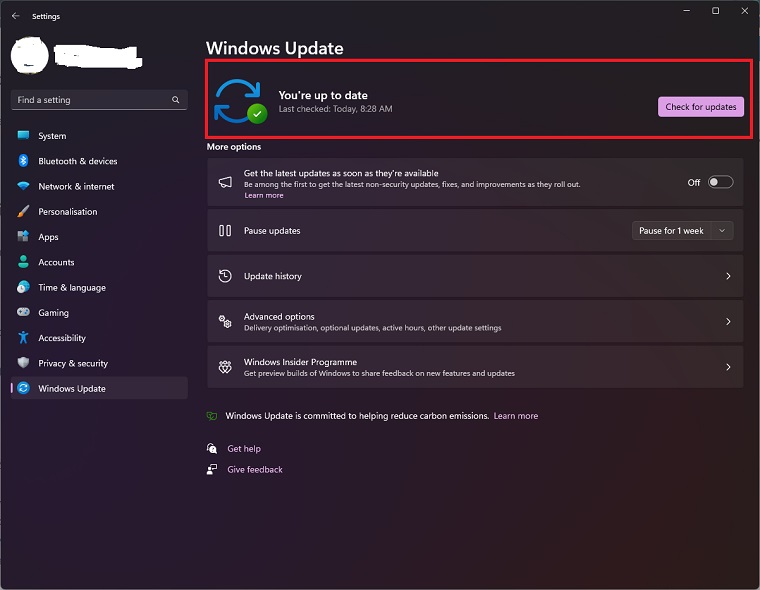
If updates are available, install them and restart your computer. If the issue continues, proceed to the next solution.
3. Disable Windows Search and Indexing
Windows Search and Indexing are known to cause high disk usage in some cases. To disable these features temporarily:
- Right-click the Start button and select Windows PowerShell (Admin).
- Type
net.exe stop "Windows search"and hit Enter.
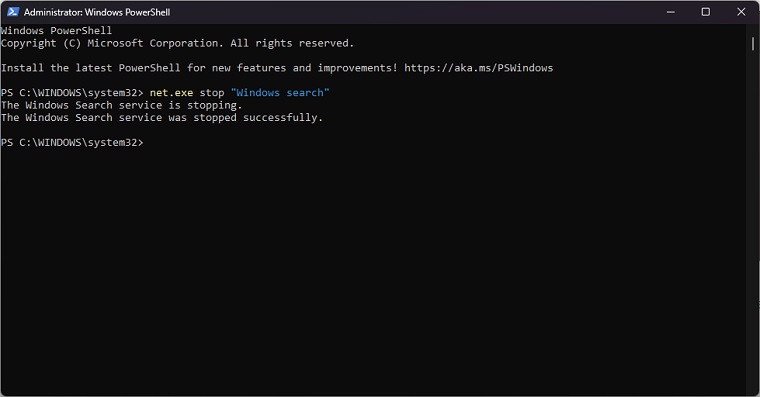
If this resolves the issue, you can disable the features permanently by following these steps:
- Press Windows key + R, type
services.msc, and hit Enter.
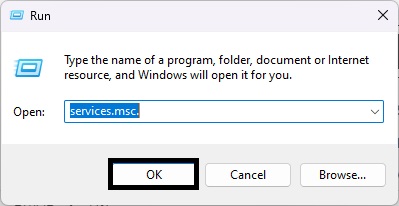
- Locate Windows Search in the list, double-click it, and change its Startup type to Disabled.
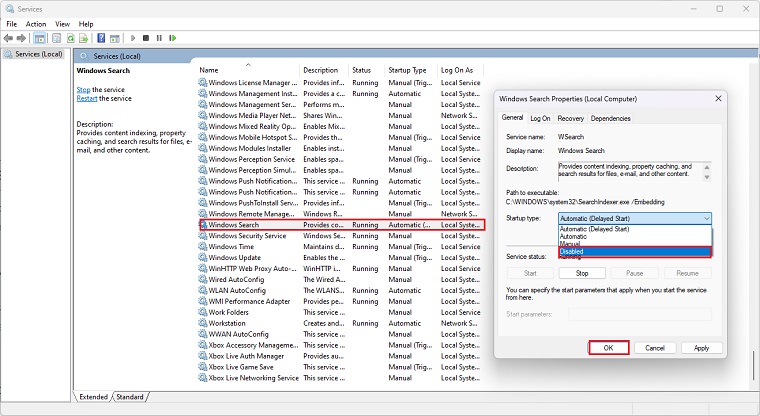
- Click OK to save the changes.
4. Check for Malware or Viruses
Malware or viruses can cause high disk usage on your computer. Make sure your antivirus software i.e. Norton 360, Bitdefender, Kaspersky Internet Security, McAfee Total Protection, and Avast Antivirus is up-to-date and perform a full system scan to detect any potential threats. If any issues are found, follow the antivirus software’s recommendations to remove them.
5. Disable Superfetch (SysMain) Service
Superfetch, also known as SysMain in newer versions of Windows, is a service that aims to improve system performance by preloading frequently used applications into memory. However, it can sometimes cause high disk usage. To disable Superfetch, follow these steps:
- Press Windows key + R, type
services.msc, and hit Enter.

- Locate SysMain in the list, double-click it, and set its Startup type to Disabled.
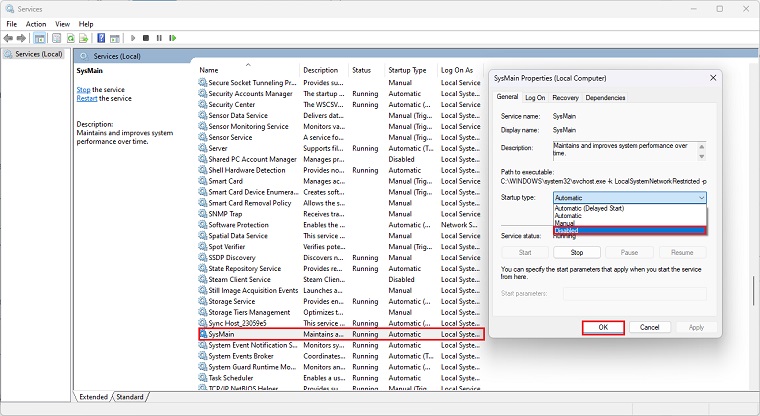
- Click OK to save the changes and restart your computer.
6. Change Power Settings to High Performance
Switching your computer’s power settings from Balanced to High Performance can help resolve high disk usage issues. To do this:
- Right-click the Start button and select Power Options.
- Click Additional power settings and select High Performance.
Note that this may increase power consumption, so it might not be suitable for laptops running on battery power.
7. Run Disk Check
Running a disk check can help identify and fix issues with your hard drive that may be causing high disk usage. To run a disk check:
- Press Windows key + X and select Windows PowerShell (Admin).
- Type
chkdsk.exe /f /rand hit Enter.
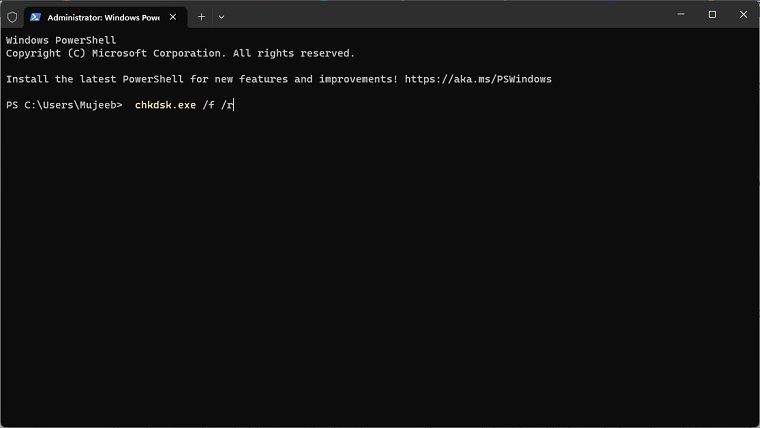
You may be prompted to restart your computer to complete the disk check. Be sure to close all open applications before restarting.
8. Adjust Browser Settings and Disable Flash
If you’re using Google Chrome, adjusting browser settings and disabling Flash can help reduce disk usage. To do this:
- Open Chrome and navigate to Settings > Privacy and Security> Site Settings.
- Locate the Flash section and toggle the switch to Block sites from running Flash.
Additionally, keeping your browser up-to-date can also help improve performance and reduce disk usage.
9. Close Unnecessary Background Programs
When your PC runs too many things in the background, it will give Windows 10 a 100% disk Usage issue. So, disable some of the background activities by following the below steps;
- Press CTRL + Shift + Esc to open the Task Manager.
- Go to the Processes tab.
- Select the process you want to turn off and then click on End Task.
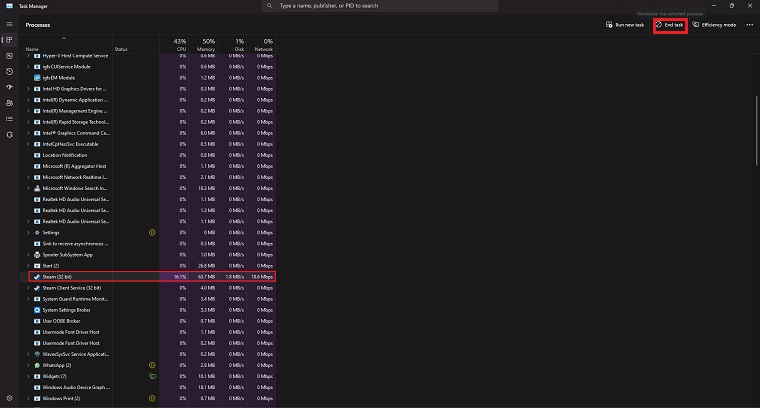
- Disable other non-essential processes in the same way.
Keep in mind that you should only disable the services you are familiar with. Killing any essential services may bring new problems.
10. Fix Issues with Skype
Skype is another application known to cause high disk usage. Try disabling it temporarily to see if it resolves the issue. If it does, consider updating Skype or finding an alternative communication tool.
11. Update SATA Drivers
Outdated SATA drivers can sometimes cause high disk usage. Make sure you have the latest SATA drivers installed by updating them through the Device Manager.
12. Update Device Drivers
If Windows 10 has high disk usage on startup, then updating device drivers, especially the storage and chipset drivers, is recommended to ensure compatibility and stability.
13. Configure Windows Help
In Windows 11/10, if 100% is disk usage but nothing running then try to Configure Windows Help. This can contribute to high disk usage. To disable this feature:
- Press the Windows key + I to open Settings.
- Navigate to System > Notifications & Actions.
- Disable the option Get tips, tricks, and suggestions as you use Windows.

14. Reset Virtual Memory
Resetting virtual memory can help resolve high disk usage caused by insufficient RAM. Follow these steps to reset your virtual memory:
- Type Advanced system settings in the Windows search bar.
- Navigate to the Advanced tab > Performance > Settings.
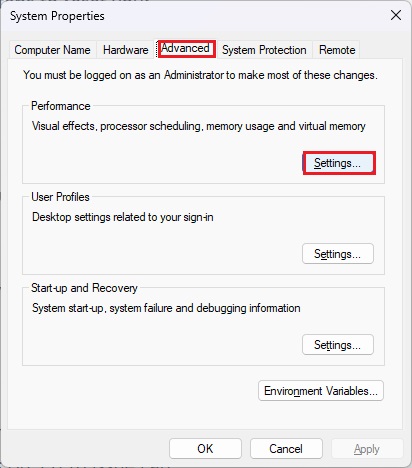
- In the Advanced tab, click Change under the Virtual Memory section.
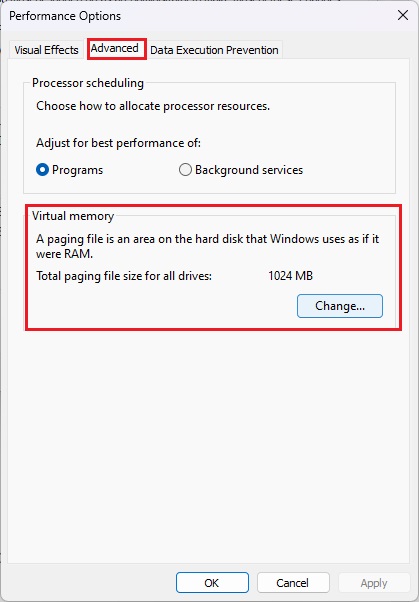
- Uncheck Automatically manage paging file size for all drives and set a custom size for your virtual memory, based on your system’s RAM.
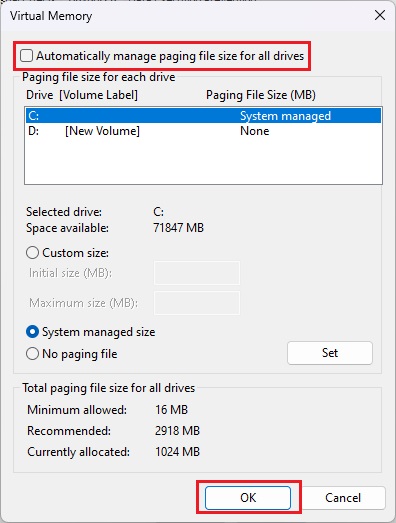
After adjusting virtual memory settings, restart your computer and see if the disk usage issue is resolved.
15. Upgarde your Disk
A few users mention that upgrading to a solid-state drive (SSD) can significantly improve disk performance. So, if you are an HDD user, try to upgrade to a solid-state drive (SSD) so that your 100 percent disk usage Windows on 11/10 issue can resolve.







